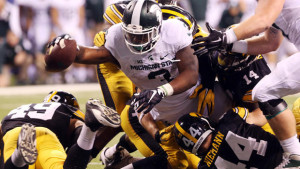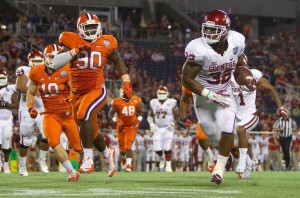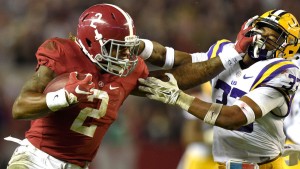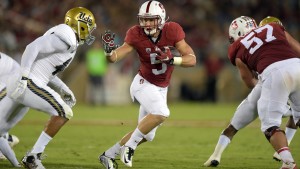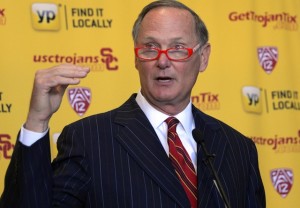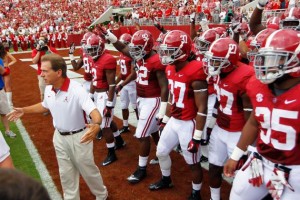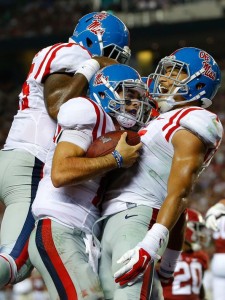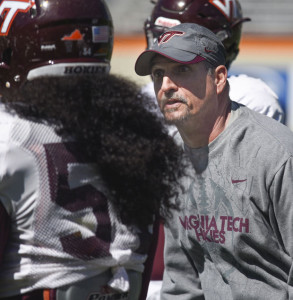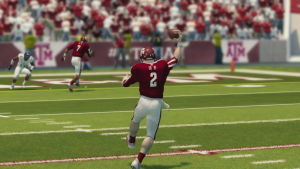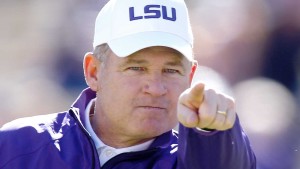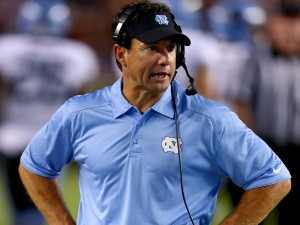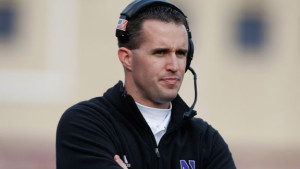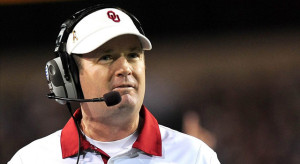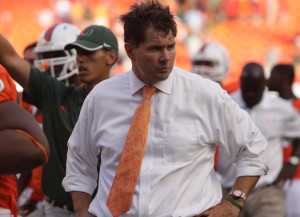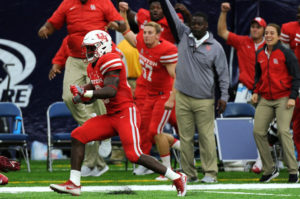
The first week of the college football season generally lends itself to overreactions and irrational thought. For example, after this year’s week one, Deondre Francois is the best quarterback in the country, Texas is back, and Les Miles is getting fired. So it’s easy to see where fans and pundits could get a little excited about the results of just one week of games.
And that’s where the Houston Cougars come in.
You remember Houston from a season ago as the team that crashed the New Year’s Six Bowl games, defeating Florida State 38-24 in last year’s Peach Bowl. The team came into this season as a runaway hype train, with everything from a Heisman contender at quarterback to a coach who wears UH grills on his teeth like he’s 2 Chainz. With many significant pieces coming back from a season ago, as well as the addition of five-star defensive lineman Ed Oliver, Houston appeared to be a formidable team heading into this year.
And they proved their believers right with their performance on Saturday. The week one test against Oklahoma would prove to be an outstanding victory and a validation of what the Houston Cougars could be: the team that crashes college football’s party and, perhaps, makes the College Football Playoff.
And really, Houston dominated the Sooners from start to finish on Saturday. The win was nearly cemented in the third quarter when Oklahoma kicker Austin Seibert attempted a long field goal. He not only missed the kick but he left it short. And that’s never a good idea in college football:
Houston with a Kick Six. What a play! pic.twitter.com/4tPy4L9zM5
— Dr. Saturday (@YahooDrSaturday) September 3, 2016
I think it’s safe to call that field goal return the third–greatest of its kind in the history of college football. Nonetheless, it served as the turning point in the game. The Cougars later added another touchdown to expand their lead, and only a late score from Oklahoma brought the final score to within ten points at 33-23. The win was arguably the most significant in the history of the program and elevated the Cougars to the sixth ranking in this week’s Associated Press poll. And, predictably, the hype around Houston is becoming unbearable, with many around the sport suggesting that the team has passed its biggest test on its way to the College Football Playoff.
And yet, even as Houston has climbed the polls and showed it can play with any team in the country, we still need to pump the brakes here, at least for the next few weeks.
For starters, there is every chance that the Oklahoma Sooners are not that great of a team. We have seen many examples in years past of teams that have disappointed after being ranked near the top of the polls at the beginning of the season. While Oklahoma can still make the Playoff, it is possible that this win may not look nearly as good in three months as it does now.
Another component to this discussion is that Houston’s schedule is, honestly, not that strong. Aside from a November 17 tilt against Louisville that could decide the AAC and even have Playoff implications, the Cougars’ schedule consists of matchups with teams like Lamar, UConn, SMU, and Tulane. In fact, as of right now, Louisville is the only remaining ranked team on Houston’s schedule. That could change, but if it doesn’t, the Playoff committee will have to seriously consider the strength of Houston’s slate and whether or not they deserve to be among the last four teams standing, even if they do go undefeated.
About that game with Louisville: it could be very important to the Playoff and most certainly will not be a cakewalk for the Cougars. While Houston quarterback Greg Ward could make his way to New York as a Heisman finalist, the Cardinals have their own Heisman contender in quarterback Lamar Jackson. Jackson accounted for eight touchdowns last week and even though he did that against Charlotte, it’s still a very impressive performance that is worth noting. While Houston’s schedule looks to be fairly easy, Louisville will be no pushover. Of course, there’s also the possibility that Houston doesn’t make it to week 12 with its Playoff hopes alive.
Yes, that is still a very real possibility. While basically everyone wants to jump to conclusions and assume that Houston is just going to run the table the rest of the way, it is possible that the Cougars won’t make it through the season without losing. Obviously, any loss would virtually end Houston’s run at a national championship, so there is little to no margin for error here.
Also, what if Ward or any of the team’s other main contributors get hurt at some point during the season? While it sounds terrible to speculate on this subject, Houston’s one loss last season (a 20-17 defeat at the hands of UConn) came with a backup quarterback (Kyle Postma) at the helm. If Postma has to step in to relieve Ward in the case of injury again this season, there is no guarantee that the Cougars will come out on the other side.
There are many reasons why Houston can run the table and make the College Football Playoff. After all, if the Cougars go undefeated, even with their somewhat weak schedule, there probably won’t be any way the committee can put three (or even four) one-loss teams ahead of them. If Houston is able to win the rest of its games, there is almost no reason to suggest they won’t be playing for a national championship.
On the other hand, New Year’s Eve, the date of the College Football Playoff semifinals, is a whole 113 days away. Many things can change between now and then, which should be a reminder that Houston (and every other team in the country) is one injury away from being a very different, and markedly worse, team.
Houston looked very good in week one and their win over Oklahoma put the nation on notice. But let’s not get too far ahead of ourselves: they have a long way to go if they want to make the Playoff.


